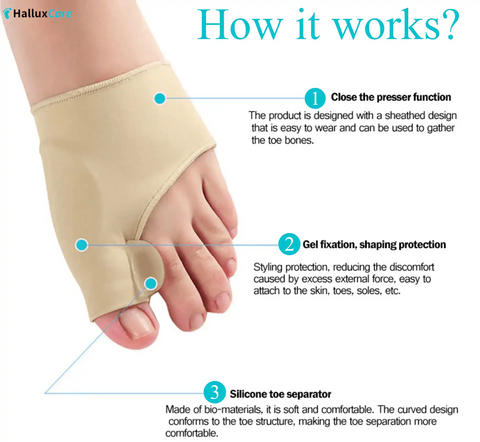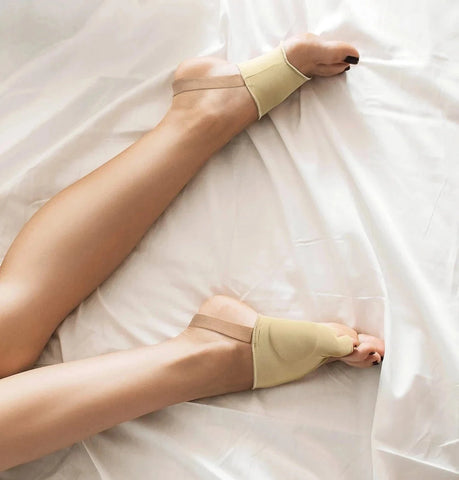How to Cope with Bunion Embarrassment: Real Stories, Recovery Tips & Relief Solutions
Author: Dr. Emily Carter, DPM, Board-Certified Podiatrist
Last Updated: 2025-08-18
Bunions—medically known as hallux valgus—are a common foot condition that can cause not just physical pain, but also emotional distress and embarrassment. If you've ever hesitated to show your feet or adjusted your lifestyle because of bunions, you're not alone. A popular Reddit post recently highlighted one user’s journey from hiding their feet with swim shoes and Hey Dudes to finally undergoing bunion surgery. Their story resonates with many who struggle with the physical symptoms and the self-consciousness bunions often cause.
This article offers evidence-based insights, expert guidance, and real-world coping strategies to help you manage bunion pain, reduce embarrassment, and explore both surgical and non-surgical relief options. We’ll also highlight recommended bunion relief products—without altering any existing product sections, photos, links, or ratings.
Key Takeaways
- Bunions are common: Up to 23% of adults ages 18-65 and over 35% of those 65+ experience bunions.¹
- Embarrassment is normal: Many feel self-conscious about bunion appearance, especially in social situations.
- Treatment is available: Both surgical and non-surgical options can reduce pain and improve confidence.
- Expert support helps: Consulting a podiatrist ensures you receive safe, effective care tailored to your needs.
- Community matters: Sharing your story and learning from others reduces stigma and isolation.
Understanding Bunion Embarrassment
Why Do Bunions Cause Self-Consciousness?
- Visible Deformity: The bump and toe misalignment are often visible in sandals or barefoot, leading to embarrassment.²
- Footwear Limitations: Many hide their bunions with closed-toe shoes, sacrificing comfort and style.
- Social Stigma: Misconceptions persist—bunions are not caused by poor hygiene, but by genetic and biomechanical factors.³
Real-Life Coping Strategies
- Discreet Footwear: Slip-on shoes, swim shoes, or wide toe box footwear can mask bunions while reducing pain.
- Online Communities: Platforms like Reddit provide a supportive space to share stories and advice, normalizing the condition.
When to Consider Bunion Surgery
Some, like the Reddit user above, only consider surgery when bunions lead to significant discomfort or deformity. Surgery is not the first option, but it can be life-changing when conservative treatments fail.
Signs It’s Time for Surgery
- Chronic Pain: Persistent pain, even at rest, unresponsive to other treatments.⁴
- Toe Deformity: Overlapping toes or worsening displacement.
- Limited Mobility: Difficulty walking or performing daily activities.
- Failed Conservative Treatments: When orthotics, bunion correctors, or physical therapy no longer provide relief.
Post-Surgery Recovery Insights
- Initial Downtime: Most patients need several weeks for recovery; swelling may persist for months.⁴
- Long-Term Satisfaction: Studies show significant improvements in pain relief, function, and self-confidence post-surgery.⁵
Always consult a board-certified podiatrist or orthopedic surgeon to discuss surgical options and expected outcomes.
Non-Surgical Bunion Pain Relief and Correction
Not ready for surgery? Many people manage bunion symptoms effectively with conservative treatments. According to the American Academy of Orthopaedic Surgeons (AAOS), non-surgical methods can slow progression and provide significant relief.⁴
Must-Try Bunion Relief Methods
- Orthopedic Bunion Sleeves: Provide gentle realignment and cushioning to reduce pain and slow progression.
- Toe Separators: Help prevent overlapping toes and relieve pressure.
- Wide-Toe Shoes: Reduce friction, accommodate the bunion bump, and improve comfort.
- Foot Exercises: Strengthen foot muscles and improve flexibility (e.g., toe stretches, marble pickups).⁶
4.9 ⭐⭐⭐⭐⭐ ( 1843 reviews )
Practical Tips & Real-World Applications
- Choose Shoes Wisely: Look for brands with wide toe boxes, arch support, and cushioning. Consider custom orthotics if recommended by your podiatrist.
- Practice Foot Care: Moisturize and inspect your feet regularly to prevent skin issues or calluses.
- Incorporate Foot Exercises: Add simple stretches and strengthening exercises to your daily routine.
- Don’t Hide—Adapt: Confidence comes from finding solutions that let you live fully, whether that means supportive footwear or simply embracing your journey.
Quick Tips to Reduce Bunion Embarrassment
- Select Supportive, Stylish Shoes: There are fashionable brands designed for foot health.
- Stay Active: Let solutions, not bunions, guide your lifestyle choices.
- Connect with Others: Sharing your story online or in-person can be empowering and supportive.
FAQs
What causes bunions?
Bunions are often hereditary but can be aggravated by biomechanics, arthritis, or tight footwear.³
Can bunions go away on their own?
No, bunions typically worsen over time without intervention. Conservative treatments can slow progression and ease symptoms.⁴
Are bunion correctors effective?
They can relieve discomfort and slow progression but do not correct the underlying bone deformity.⁴
Is surgery the only cure for bunions?
Surgery is the only way to permanently correct the bone alignment, but many people find lasting relief with non-surgical options.⁴
Will my bunion come back after surgery?
Recurrence is possible, especially if underlying causes aren’t addressed. Proper footwear and foot care reduce the risk.⁵
Final Thoughts: Share Your Experience!
Have you struggled with bunion embarrassment or pain? What solutions or treatments have worked for you? Share your story or tips in the comments below—your voice could help someone else on their journey to bunion pain relief and confidence!
Recommended Bunion Relief Products from HalluxCare.com
If you're looking for relief from bunion pain, consider using the Orthopedic Bunion Pain Relief & Correction Sleeve, which provides support and helps to alleviate discomfort.
For additional protection, the Tailor's Bunion Bunionette Pain Relief Protection Sleeves are designed to offer comfort and protection for bunionette pain.
To nourish and soothe the skin around bunions, as well as to promote healthy hair, consider the Jamaica Black Castor Oil Soothing Oil. Known for its moisturizing and anti-inflammatory properties, it helps alleviate discomfort around bunions and supports hair growth and scalp health.
Expert References
- Nix S, Smith M, Vicenzino B. Prevalence of hallux valgus in the general population: a systematic review and meta-analysis. J Foot Ankle Res. 2010;3:21. Link
- American Podiatric Medical Association. "Bunions: Causes and Treatments." APMA
- Mayo Clinic Staff. "Bunions." Mayo Clinic, 2024. Mayo Clinic
- American Academy of Orthopaedic Surgeons. "Bunions (Hallux Valgus) - Treatment & Prevention." AAOS
- Easley ME, Trnka HJ. "Current concepts review: hallux valgus part II: operative treatment." Foot Ankle Int. 2007;28(6):748-58.
- Harvard Health Publishing. "Exercises to Relieve Bunion Pain." Harvard Health
Reviewed by Dr. Emily Carter, DPM, Board-Certified Podiatrist




